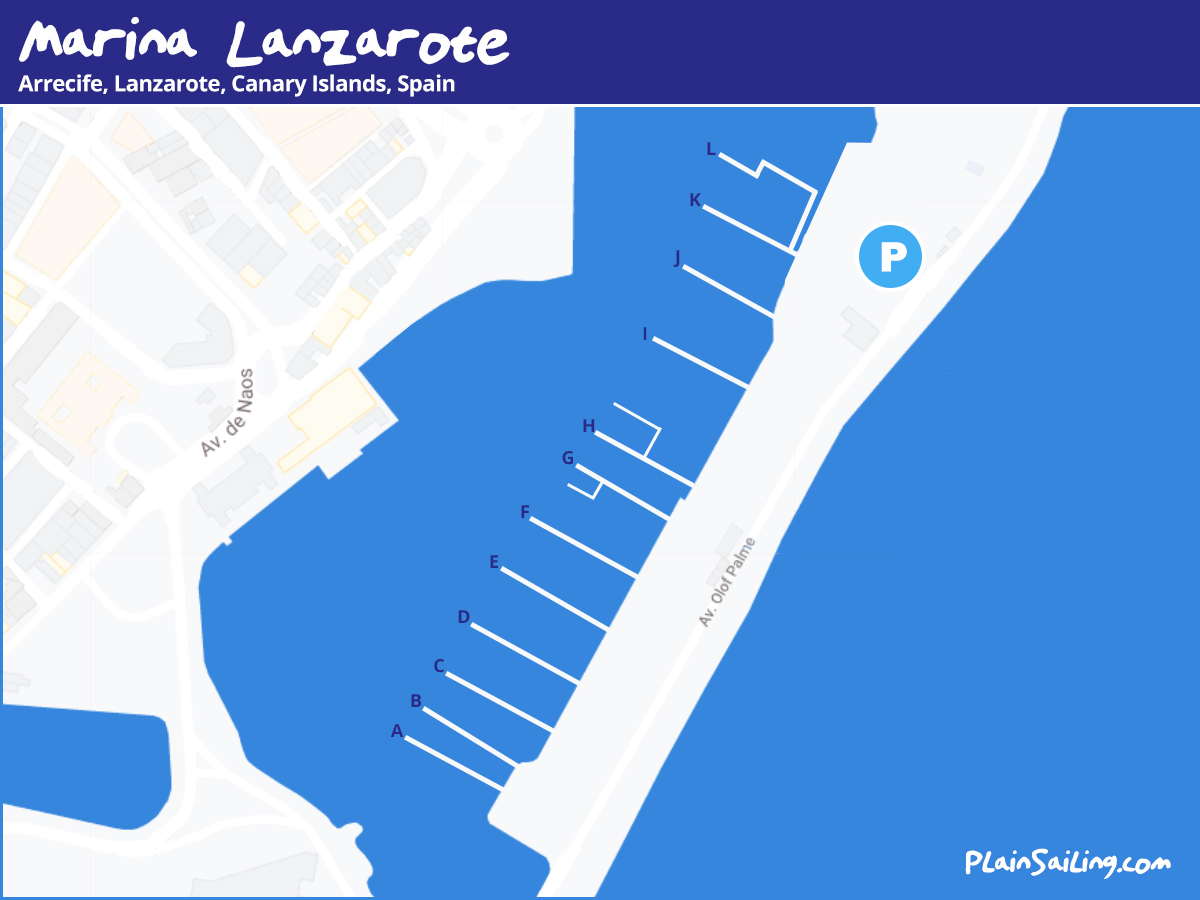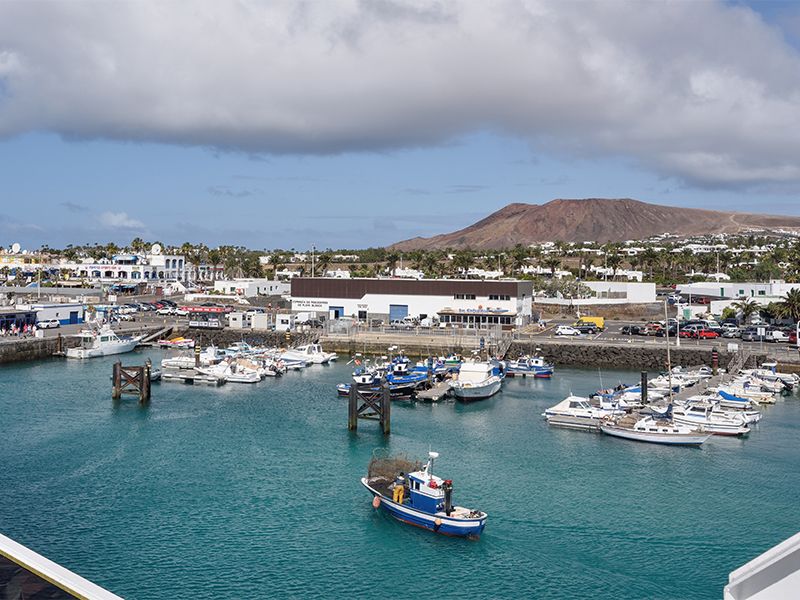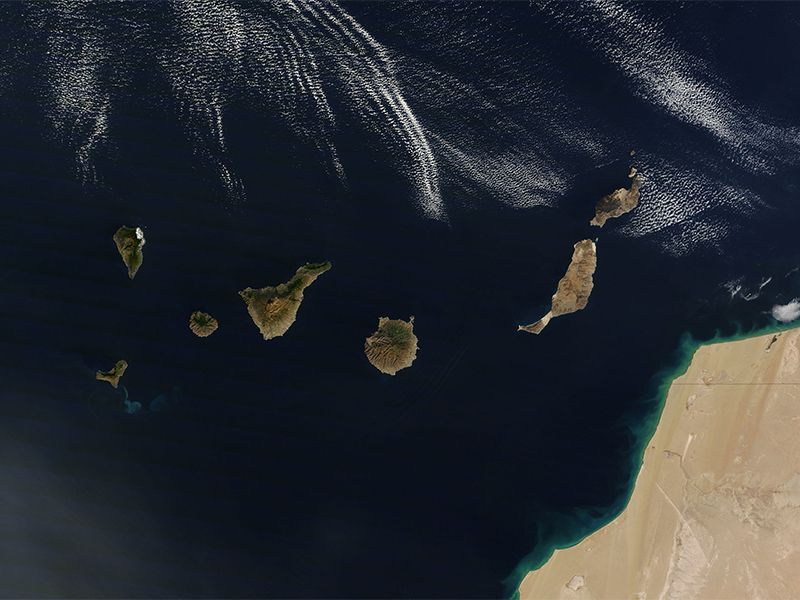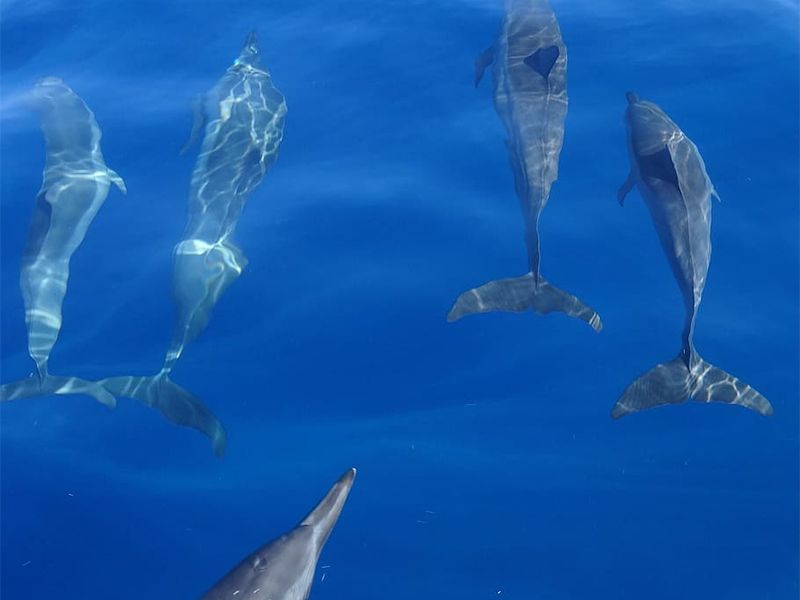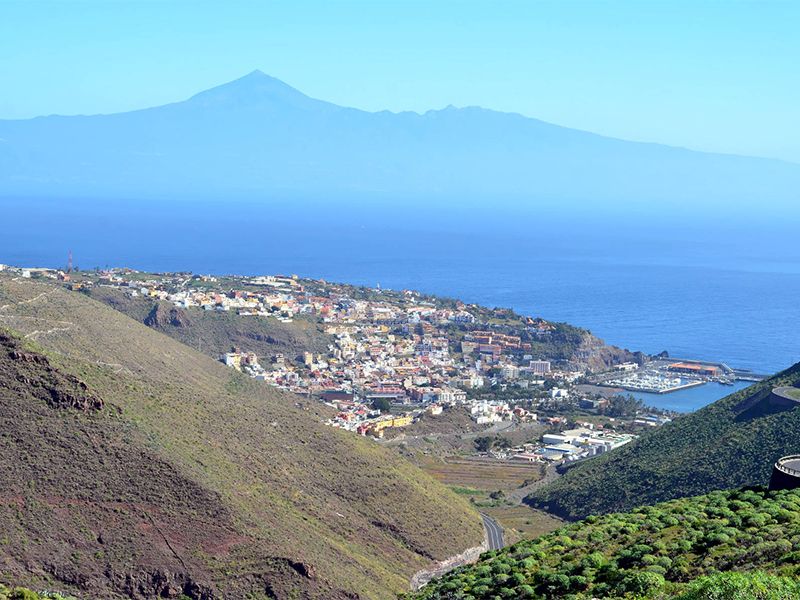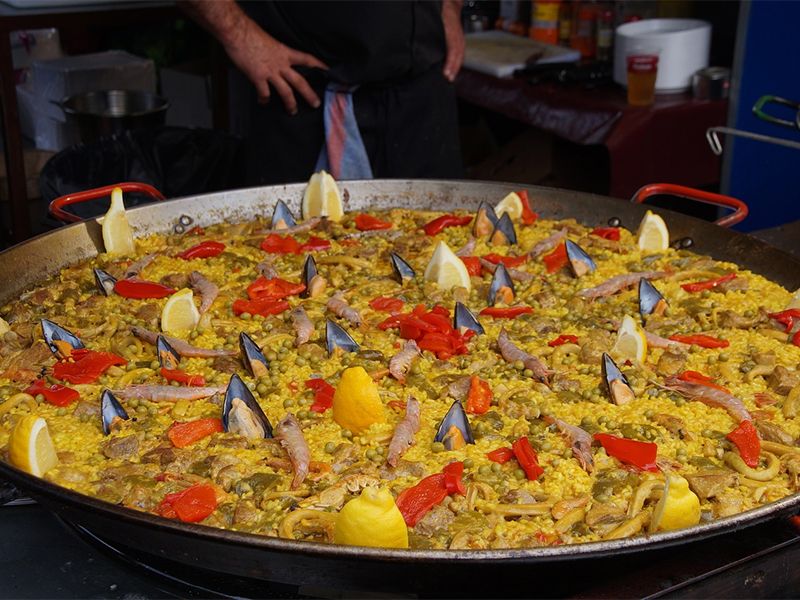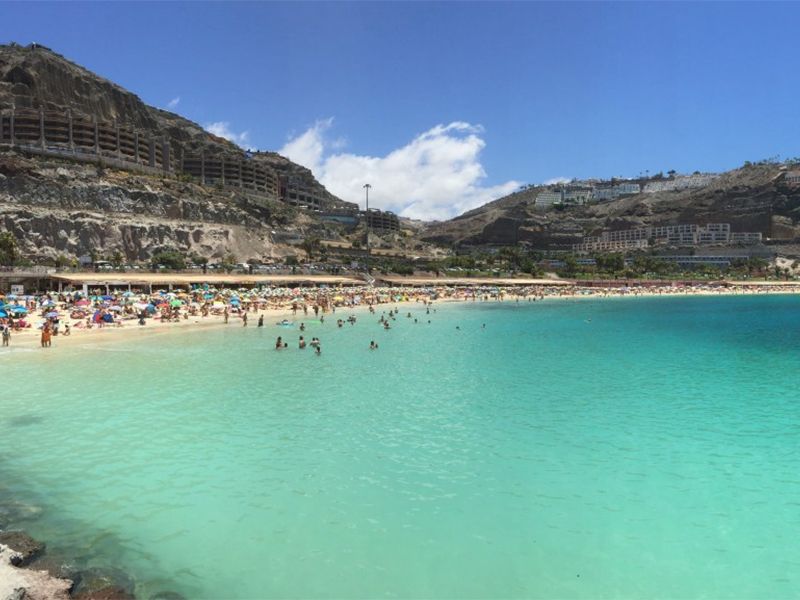6-day Sailing Itinerary from Lanzarote
From Arrecife you’re well positioned to head north to the remote wilderness of the Chinijo islands in search of dolphins and other wildlife, head south to neighbouring Fuertaventura, or just bimble up and down the better (East) coast of Lanzarote, enjoying the beaches and marvelling at the volcanic landscape.
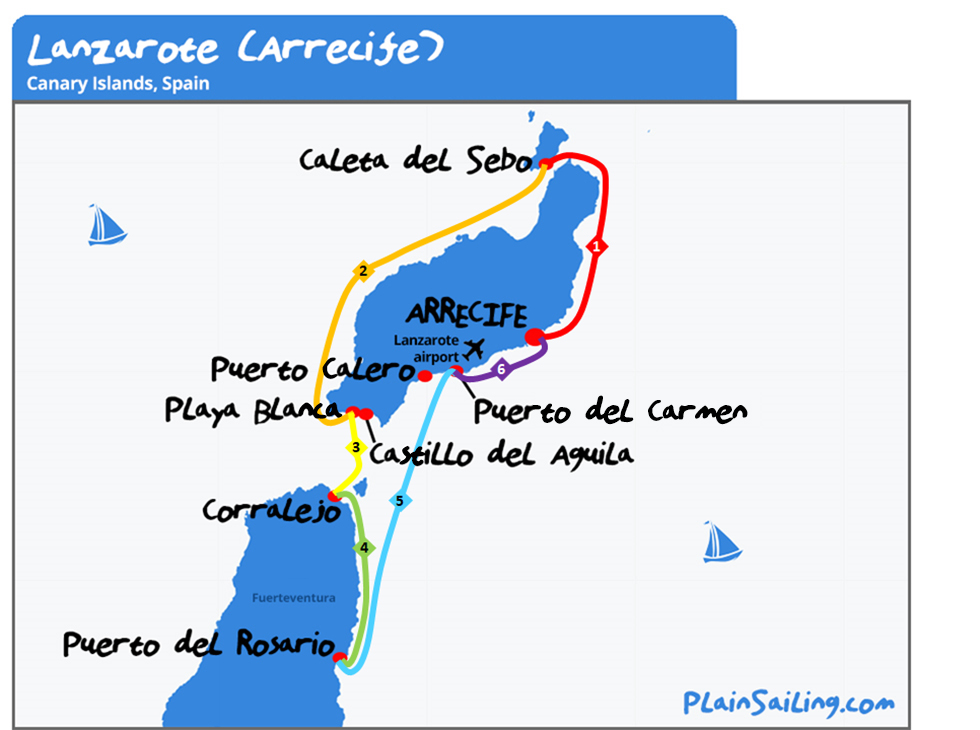 Our six-day itinerary from Arrecife does a mixture of all of those options, circumnavigating the island in its entirety, heading north to find nature on La Graciosa (the largest island of the Chinijo achipalego) before heading south to Puerto del Rosario, the capital of Fuerteventura, and back up to Arrecife, taking in the best stops along the way. It covers 120 nM, an average of 20 nM a day, which should take you about 4-5 hours of sailing a day, leaving lots of time for exploring each stop in a little more depth, and travelling at your own leisurely pace.
Our six-day itinerary from Arrecife does a mixture of all of those options, circumnavigating the island in its entirety, heading north to find nature on La Graciosa (the largest island of the Chinijo achipalego) before heading south to Puerto del Rosario, the capital of Fuerteventura, and back up to Arrecife, taking in the best stops along the way. It covers 120 nM, an average of 20 nM a day, which should take you about 4-5 hours of sailing a day, leaving lots of time for exploring each stop in a little more depth, and travelling at your own leisurely pace.
The itinerary is only a six-day itinerary because you likely won’t get on the boat until late on Saturday afternoon, so it makes sense to get provisions in and to be familiar with the boat (and to see a little of Arrecife before setting sail on Sunday morning. At the other end of the week, you’ll need to return the boat to Arrecife on the Friday night, before overnighting in Arrecife and disembarking on Saturday morning - which gives you six days of fantastic sailing.
Day 1. Arrecife to Caleta del Sebo – 23 nM
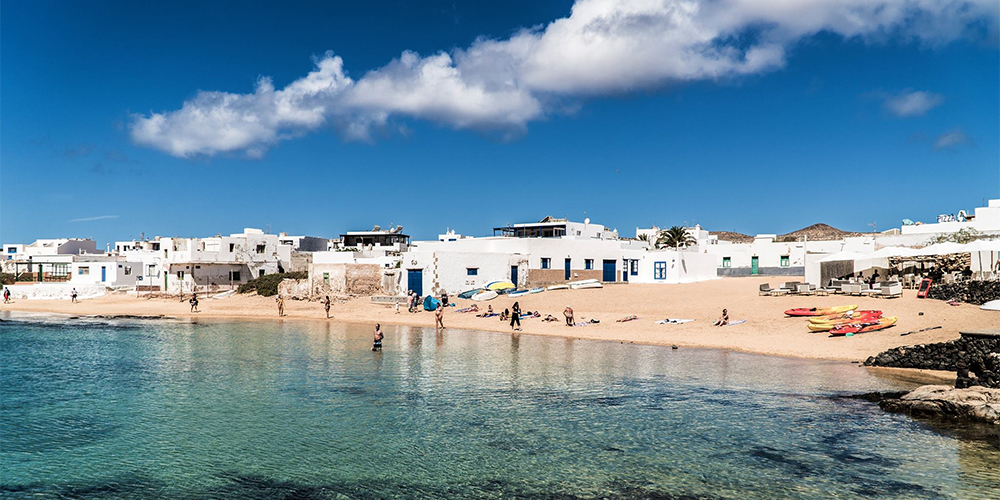 Hola, mi Capitan! Welcome to the Canary Islands, the lands of the eternal spring. ‘Discovered’ by Jube II on behalf of Caesar Augustus, it has changed hands over the years, and we’re now officially sailing in Spanish European waters, even though we’re only 70 nM from Africa – in fact, in the 1960’s there were calls for the Canary islands to be granted independence from Spain and to become a recognised member of the continent of Africa.
Hola, mi Capitan! Welcome to the Canary Islands, the lands of the eternal spring. ‘Discovered’ by Jube II on behalf of Caesar Augustus, it has changed hands over the years, and we’re now officially sailing in Spanish European waters, even though we’re only 70 nM from Africa – in fact, in the 1960’s there were calls for the Canary islands to be granted independence from Spain and to become a recognised member of the continent of Africa.
We could talk about continents and self-autonomy all day, but we’ve got some sailing to do, so let’s get the crew and the provisions on board, drop the lines, and let’s get out there! Today we’re sailing north, likely close-hauled against the prevailing northeasterly winds.
Today we’re off to Caleta del Sebo, the capital of La Graciosa island, and the Chinijo islands as a whole. We’re some way off the beaten track - the island has a population of 700, and the village is very basic (but has a few shops and a restaurant) so you’ll feel a bit like Robinson Crusoe when you arrive here.
Without human interference, the island is thriving with wildlife - including dolphins and seals, all sorts of aquatic life, and many birds, including flamingos and, as you might expect, canaries (but beware, the Canary islands names was derived from Latin ‘Canaria’ - meaning dog). Life moves at a slower pace around here, so it’s the ultimate place to stop at on the first day of the holiday.
Day 2. Caleta del Sebo to Playa Blanca – 34 nM
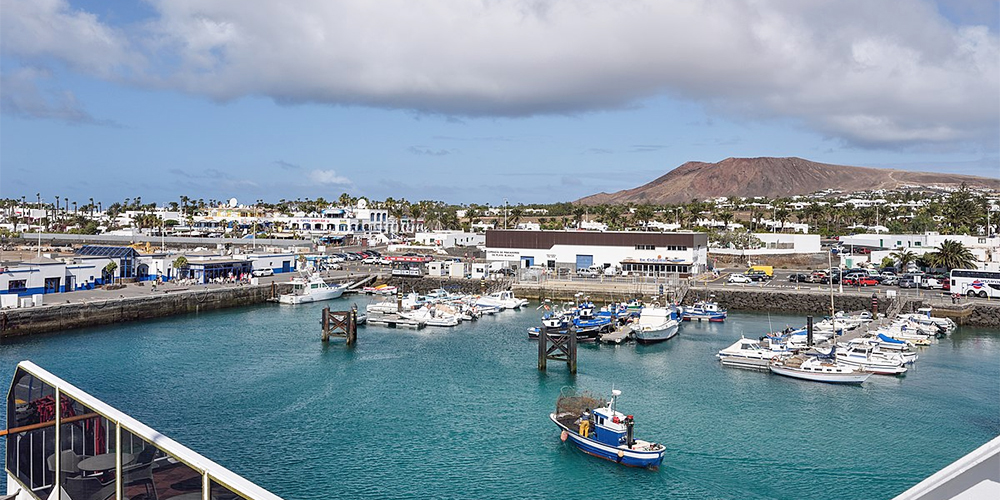 After a no doubt tranquil nights’ sleep, today is the longest leg on our voyage, principally because there aren’t that many good places to overnight on the west coast of Lanzarote, so we’re on a mission to sail the length of it today – though 34 nM is not too much of a slog, and you should be able to make good time running with the prevailing wind.
After a no doubt tranquil nights’ sleep, today is the longest leg on our voyage, principally because there aren’t that many good places to overnight on the west coast of Lanzarote, so we’re on a mission to sail the length of it today – though 34 nM is not too much of a slog, and you should be able to make good time running with the prevailing wind.
You’ll start to appreciate the vast barren and volcanic terrain of Lanzarote as we sail along it, with craggy cliffs along much of the coastline. This is the side of the island which faces the Atlantic, so waves come literally thousands of miles to crash against these cliffs. The highest point on the island (which is before Caleta da Famara) is Peñas del Chache, is 671m above sea level and is one of the best places in the world for stargazing.
Keep following the coast down and around to reach Papagayo bay on the south coast, which is a sprawling beach and (quiet) tourist resort area, and a return to civilisation. There’s a choice of marinas here, and whilst the Rubicon marina offers a more comfortable place to stay, Playa Blanca is closer to the old town and feels a bit more authentic. There’s plenty of choice of places to eat and drink here, some with stunning views.
Day 3. Playa Blanca to Corralejo (via Isla de Lobos) – 9 nM
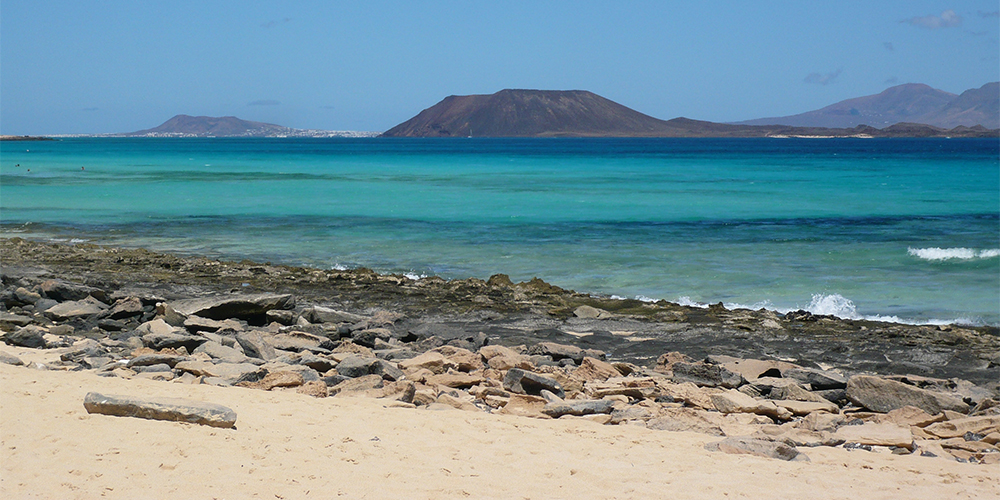 After the long leg yesterday, you can let the crew rest awhile today as we’re on a short leg today, hopping 9 nM to the island of Fuerteventura, and the town of Corralejo. When you’ve had your fill of Playa Blanca we’re sailing pretty much due South, reaching across the prevailing wind.
After the long leg yesterday, you can let the crew rest awhile today as we’re on a short leg today, hopping 9 nM to the island of Fuerteventura, and the town of Corralejo. When you’ve had your fill of Playa Blanca we’re sailing pretty much due South, reaching across the prevailing wind.
Assuming you have time, sail over and round the Isla de Lobos on the way to Corralejo. It’s now a nature reserve to protect the species that live here – people can visit during the day, but there’s no accommodation on the island. You can walk up to the crater on the island if you fancy a hike.
Isla de Lobos means ‘Isle of Seals’ and it was named when explorers first arrived at the island in the fifteenth century. Sadly, there isn’t a single seal left here, after they were all killed for their meat, blubber and skin. And then on to Corralejo. In the 1960’s it was just a handful of fishermans houses, but it has grown massively into a mecca for land-lubbing tourists. It’s the second largest town on the island of Fuerteventura and has a lively nightlife, fine beaches, and even a water-park.
Day 4. Corralejo to Puerto del Rosario – 17 nM
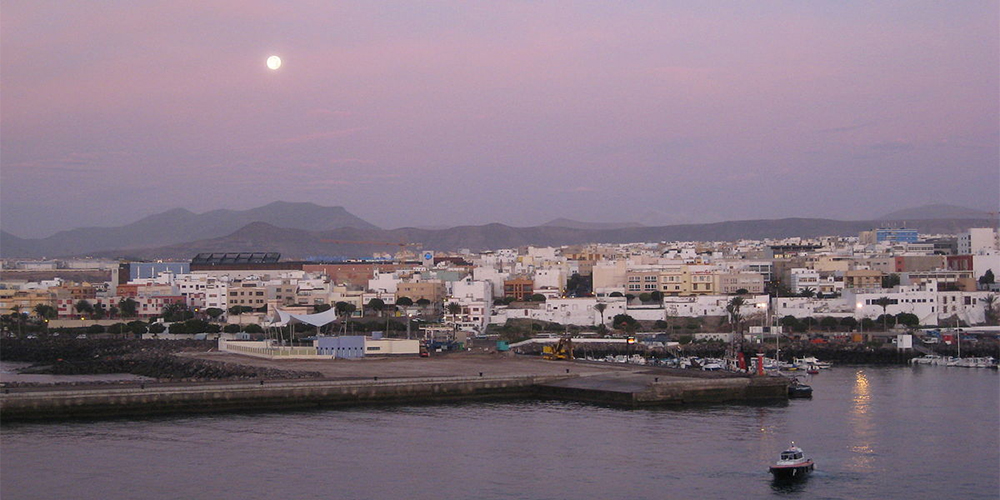 We’re leaving the tourists behind as we sail further south on Fuerteventura, to the capital of the island. Puerto del Rosario was actually called the ‘Puero del Cabras’ or ‘Port of Goats’ until 1957, when it was decided that they needed a more romantic and attractive name to entice people to the visit the island. Goats are still very much prevalent on the island, but more on goats later.
We’re leaving the tourists behind as we sail further south on Fuerteventura, to the capital of the island. Puerto del Rosario was actually called the ‘Puero del Cabras’ or ‘Port of Goats’ until 1957, when it was decided that they needed a more romantic and attractive name to entice people to the visit the island. Goats are still very much prevalent on the island, but more on goats later.
In contrast to the rest of the island, Puerto del Rosario is still an authentic working town, and the main harbour of the island – it’s been used for centuries as a stopping point for ships traveling across the Atlantic, including those shipping sugar cane, bananas, cotton and, gruesomely, was involved in the very first Spanish shipments of slaves from Africa to the Americas.
Nowadays, there is also some tourism trade, including a few beaches and pleasant places to stroll along the waterfront. There’s also a good range of tapas joints and places to eat – if you want to eat like a proper local, then you need to try the local speciality: goat stew.
Day 5. Puerto del Rosario to Puerto del Carmen – 29 nM
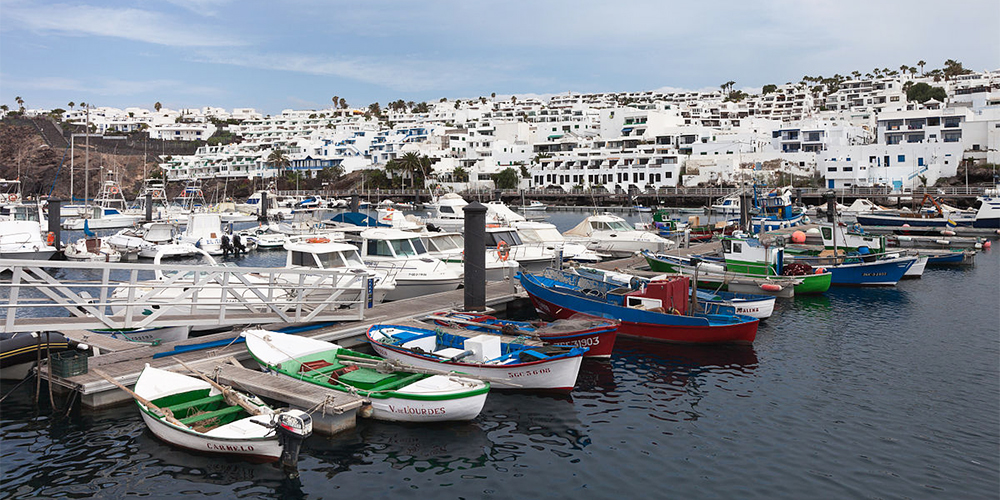 We’re continuing our adventure and hopping back to the island of Lanzarote, with Puerto del Carmen our next port of call. Don’t be put off by the fact that this is the biggest tourist destination on Lanzarote because there is a fine old town located next to the old harbour, which is well worth spending some time exploring.
We’re continuing our adventure and hopping back to the island of Lanzarote, with Puerto del Carmen our next port of call. Don’t be put off by the fact that this is the biggest tourist destination on Lanzarote because there is a fine old town located next to the old harbour, which is well worth spending some time exploring.
To get there, we’re sailing northwards – in the prevailing wind conditions, it should just about be possible to make it on a single tack, close-hauled all the way – but it’s more fun to keep the crew active anyway. If you’re making good time, you can hit the beach at Playa Quemada, but it’s almost not worth heading into the coast for.
The main road or strip of Puerto del Carmen is 7km long and has something for everyone – from beaches to sunbathe on or architecture to marvel at, from fine dining to McDonalds, from quiet tavernas to pulsating dance clubs, and pretty much everything in-between. There’s a real holiday atmosphere in the air, and it’s a nice place to sit and watch how other people choose to enjoy themselves. Particularly if you’re sat in the sunshine with a nice cool drink. Bliss!
Day 5. Puerto del Carmen to Arrecife – 8 nM
 And wow. Can you believe it is the last day already? Time has flown whilst we’ve been having fun. That means that tonight you have to return the boat to Arrecife, though you can stay on it overnight and you’ll formally check-out tomorrow morning.
And wow. Can you believe it is the last day already? Time has flown whilst we’ve been having fun. That means that tonight you have to return the boat to Arrecife, though you can stay on it overnight and you’ll formally check-out tomorrow morning.
It’s only a short sail around the coast to Arrecife, so you can take your time to explore more of Puerto del Carmen to see what your land-lubbing friends were raving about, particularly if the longer leg of sailing yesterday meant you didn’t get to see much of it. If you want to look super-slick, you can sail the yacht around the corner and throw the anchor down on Playa Grande, which is THE main beach on Lanzarote (and the one you will see on the front of all the brochures).
Once you get sailing, then you could also consider stopping at Playa Honda, where you can watch the aeroplanes landing nearby whilst you enjoy the beach, or head to Castillo de San Gabriel, which used to be the main castle protecting Arrecife from pirates. There’s a walkway back from the castle to the island, and it certainly looks impressive (the other castle to protect Arrecife from pirates was built of wood in 1573, but was burnt down a few years later, by pirates…).
And then it’s time to refuel and to moor up the boat one last time. Hopefully you’ve had a wonderful time in the sunshine, both on-board and exploring the islands, and you’re returning home with better friends than you arrived with. Enjoy one more night in Arrecife, and have a safe flight home. Come to PlainSailing.com when you’re ready to start planning your next adventure. See you online soon :)
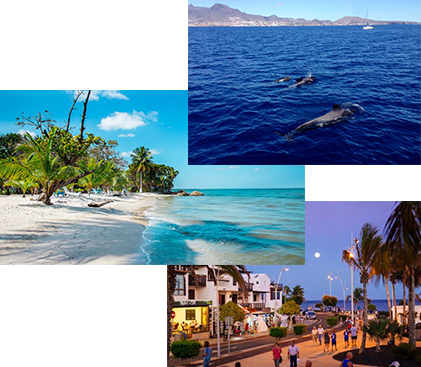

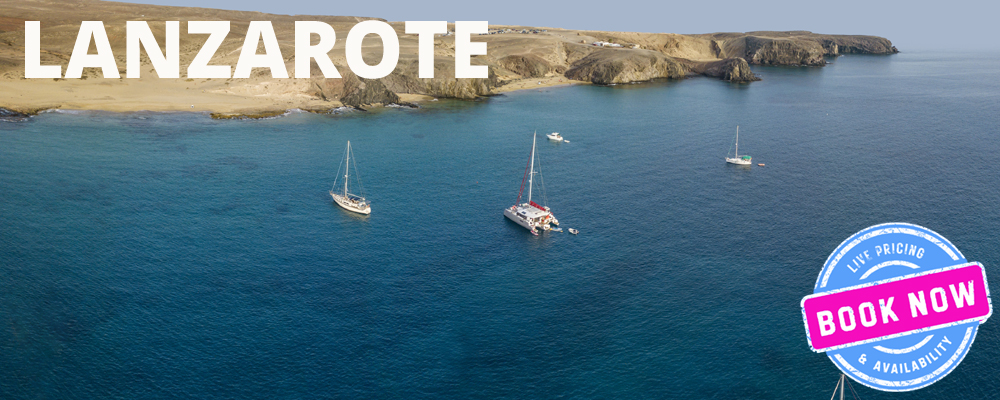
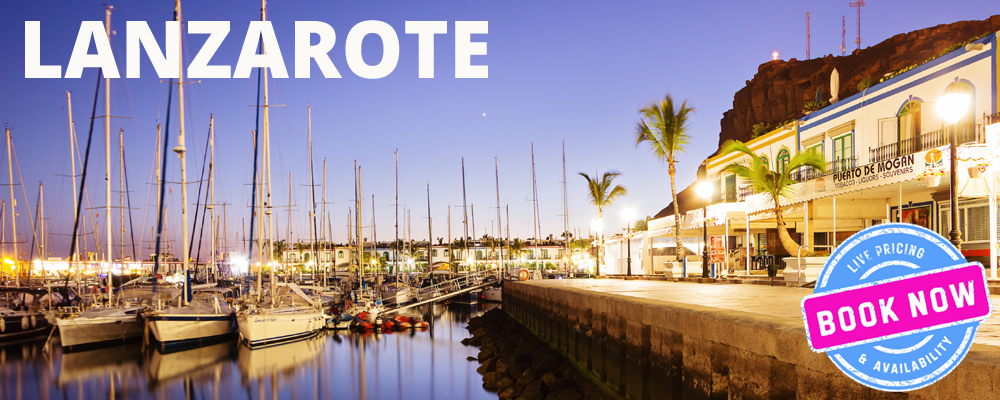
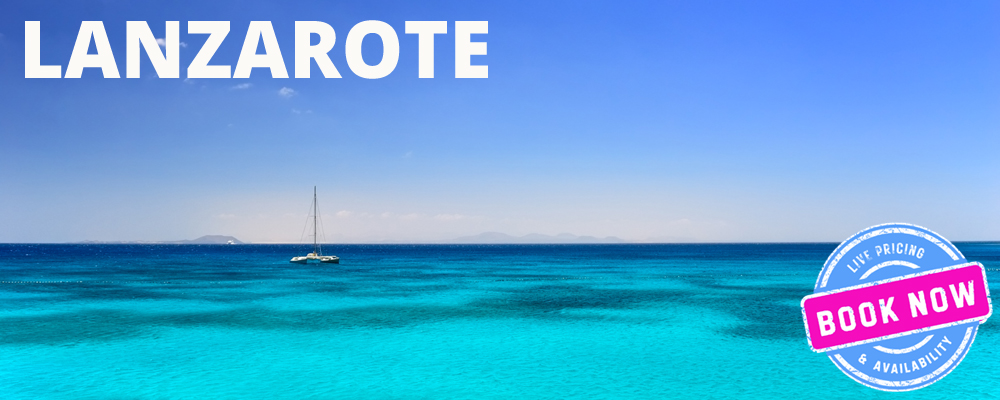
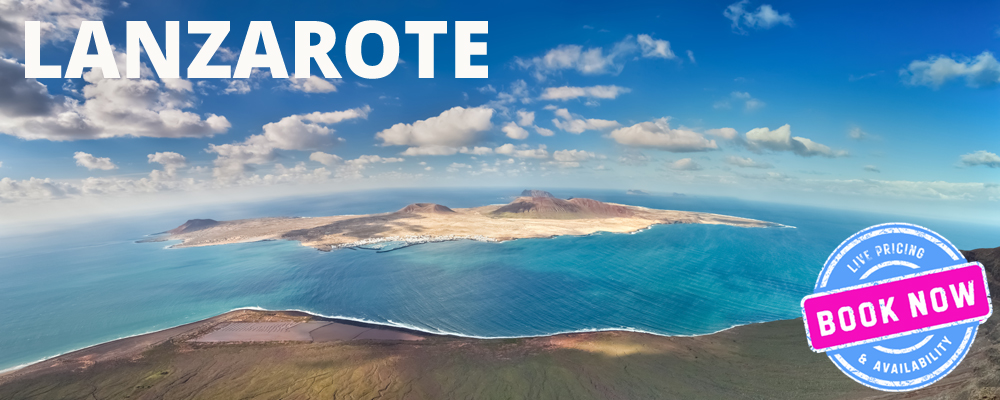


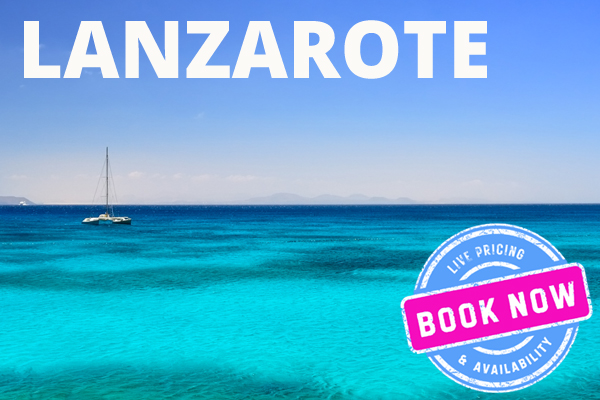
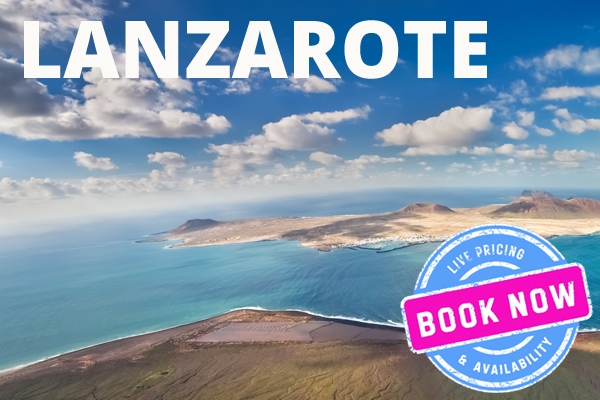

 Hola, mi Capitan! Welcome to the Canary Islands, the lands of the eternal spring. ‘Discovered’ by Jube II on behalf of Caesar Augustus, it has changed hands over the years, and we’re now officially sailing in Spanish European waters, even though we’re only 70 nM from Africa – in fact, in the 1960’s there were calls for the Canary islands to be granted independence from Spain and to become a recognised member of the continent of Africa.
Hola, mi Capitan! Welcome to the Canary Islands, the lands of the eternal spring. ‘Discovered’ by Jube II on behalf of Caesar Augustus, it has changed hands over the years, and we’re now officially sailing in Spanish European waters, even though we’re only 70 nM from Africa – in fact, in the 1960’s there were calls for the Canary islands to be granted independence from Spain and to become a recognised member of the continent of Africa.  After a no doubt tranquil nights’ sleep, today is the longest leg on our voyage, principally because there aren’t that many good places to overnight on the west coast of Lanzarote, so we’re on a mission to sail the length of it today – though 34 nM is not too much of a slog, and you should be able to make good time running with the prevailing wind.
After a no doubt tranquil nights’ sleep, today is the longest leg on our voyage, principally because there aren’t that many good places to overnight on the west coast of Lanzarote, so we’re on a mission to sail the length of it today – though 34 nM is not too much of a slog, and you should be able to make good time running with the prevailing wind.  After the long leg yesterday, you can let the crew rest awhile today as we’re on a short leg today, hopping 9 nM to the island of Fuerteventura, and the town of Corralejo. When you’ve had your fill of Playa Blanca we’re sailing pretty much due South, reaching across the prevailing wind.
After the long leg yesterday, you can let the crew rest awhile today as we’re on a short leg today, hopping 9 nM to the island of Fuerteventura, and the town of Corralejo. When you’ve had your fill of Playa Blanca we’re sailing pretty much due South, reaching across the prevailing wind.  We’re leaving the tourists behind as we sail further south on Fuerteventura, to the capital of the island. Puerto del Rosario was actually called the ‘Puero del Cabras’ or ‘Port of Goats’ until 1957, when it was decided that they needed a more romantic and attractive name to entice people to the visit the island. Goats are still very much prevalent on the island, but more on goats later.
We’re leaving the tourists behind as we sail further south on Fuerteventura, to the capital of the island. Puerto del Rosario was actually called the ‘Puero del Cabras’ or ‘Port of Goats’ until 1957, when it was decided that they needed a more romantic and attractive name to entice people to the visit the island. Goats are still very much prevalent on the island, but more on goats later. We’re continuing our adventure and hopping back to the island of Lanzarote, with Puerto del Carmen our next port of call. Don’t be put off by the fact that this is the biggest tourist destination on Lanzarote because there is a fine old town located next to the old harbour, which is well worth spending some time exploring.
We’re continuing our adventure and hopping back to the island of Lanzarote, with Puerto del Carmen our next port of call. Don’t be put off by the fact that this is the biggest tourist destination on Lanzarote because there is a fine old town located next to the old harbour, which is well worth spending some time exploring..jpg)

